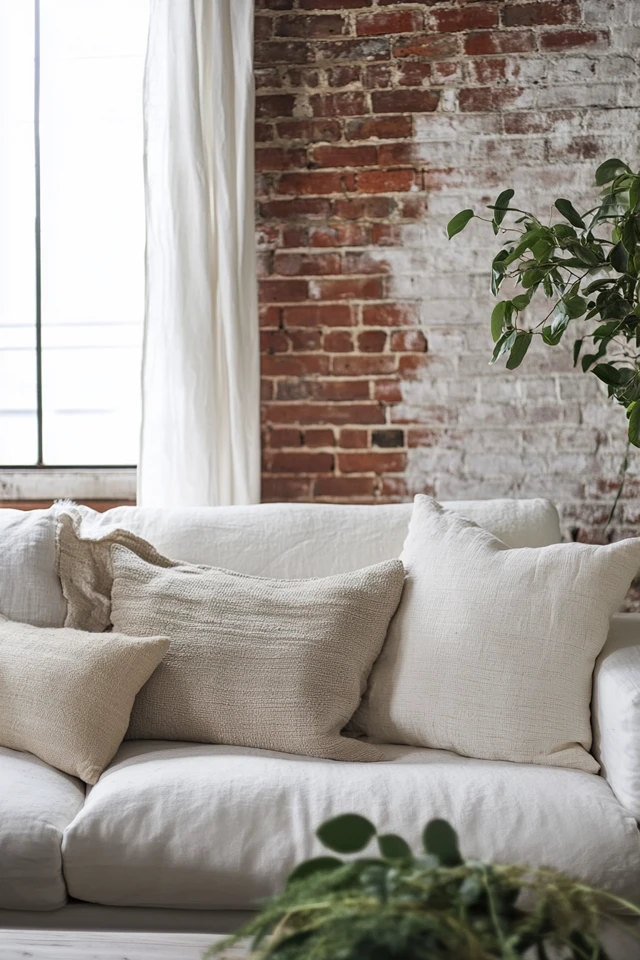Industrial and Scandinavian styles might seem like polar opposites—one is raw and edgy, while the other is light and minimalist. But when blended thoughtfully, they create a design aesthetic that’s both cozy and bold. Imagine the warmth of natural wood and soft textiles paired with the ruggedness of exposed brick, metal accents, and concrete. This fusion brings balance, sophistication, and functionality to any space.
I discovered the magic of mixing these two styles while designing a small studio apartment. The client loved the clean simplicity of Scandinavian design but wanted the edgy character of industrial elements. By combining neutral palettes, sleek furniture, and raw materials, we crafted a space that felt warm, modern, and full of personality. This experience showed me that the key to mixing these styles is finding harmony between contrast and cohesion.
In this guide, I’ll share how to seamlessly blend industrial and Scandinavian styles, from choosing materials to styling your space for maximum impact.
Why Industrial and Scandinavian Styles Work Together
1. Shared Minimalist Roots
Both styles emphasize simplicity and functionality, with a focus on clean lines and uncluttered spaces.
2. Contrast in Materials
Industrial design features raw materials like metal and concrete, while Scandinavian design adds softness through wood and textiles, creating a perfect balance.
3. Neutral Color Palettes
Both styles rely on neutral tones, making it easy to blend their elements seamlessly.
4. Focus on Comfort and Functionality
While industrial design leans toward utility, Scandinavian design prioritizes coziness (hygge). Together, they create spaces that are both practical and inviting.
Key Elements of Industrial and Scandinavian Styles
Industrial Design Elements:
- Exposed brick, concrete, and metal.
- Dark tones like black, gray, and brown.
- Rugged materials like steel, reclaimed wood, and leather.
- Statement lighting, such as Edison bulbs or metal pendants.
Scandinavian Design Elements:
- Light wood and natural textures.
- Neutral tones like white, beige, and soft gray.
- Cozy textiles like wool, linen, and cotton.
- Functional furniture with simple, clean lines.
1. Start with a Neutral Color Palette
A cohesive color palette is essential when blending industrial and Scandinavian styles.
How to Do It:
- Use a light, neutral base (white, beige, or soft gray) to reflect the Scandinavian aesthetic.
- Layer in darker tones like black, charcoal, or deep brown for an industrial edge.
- Add subtle pops of color through décor, such as muted greens or blues.
Pro Tip: Use contrasting finishes—pair matte black fixtures with light wood furniture or concrete walls with soft, white textiles.
2. Mix Materials Thoughtfully
The magic of combining these styles lies in the contrast between raw and refined materials.
How to Do It:
- Pair exposed brick or concrete walls with light wood floors.
- Choose furniture with metal frames and wooden tops to balance industrial toughness with Scandinavian warmth.
- Incorporate soft materials like wool rugs or linen curtains to offset the hardness of metal and concrete.
Pro Tip: Stick to a 60/40 balance—lean toward Scandinavian materials (wood and textiles) for a cozier feel, or industrial materials (metal and concrete) for a bolder vibe.
3. Choose Functional, Minimalist Furniture
Furniture should be both practical and stylish, with clean lines and minimal ornamentation.
How to Do It:
- Opt for Scandinavian-inspired furniture with light wood finishes and simple shapes.
- Add industrial accents, such as a black metal coffee table or leather armchair.
- Use open shelving with metal brackets for a functional yet industrial look.
Pro Tip: Avoid overly bulky furniture—stick to pieces with a sleek, streamlined design.
4. Incorporate Statement Lighting
Lighting is a key element in both styles, adding character and functionality.
How to Do It:
- Hang industrial pendant lights with metal shades or cage designs over dining tables or kitchen islands.
- Use Scandinavian-style table lamps or floor lamps with soft, diffused light.
- Incorporate Edison bulbs for a warm, industrial touch.
Pro Tip: Choose black or matte finishes for industrial fixtures and pair them with natural wood or ceramic bases for contrast.
5. Layer Textures for Warmth
Scandinavian design’s emphasis on coziness balances the rawness of industrial materials.
How to Do It:
- Add a wool or shag rug to soften concrete or metal surfaces.
- Use linen or cotton throw pillows and blankets in neutral tones.
- Incorporate natural textures like woven baskets or sheepskin throws.
Pro Tip: Layer textures in different parts of the room to create depth and visual interest.
6. Incorporate Open, Functional Spaces
Both styles prioritize functionality and openness, making them perfect for modern living.
How to Do It:
- Use open shelving made of wood and metal to display books, plants, or kitchenware.
- Opt for multi-functional furniture, such as a storage bench or nesting tables.
- Create zones within open spaces using rugs or furniture placement.
Pro Tip: Avoid overcrowding the space—leave plenty of negative space to maintain a minimalist aesthetic.
7. Use Greenery to Add Life
Plants are a hallmark of Scandinavian design and bring warmth and life to industrial interiors.
How to Do It:
- Add potted plants in simple ceramic or concrete planters.
- Choose low-maintenance greenery, such as snake plants, monstera, or succulents.
- Use hanging plants or wall-mounted planters to save space.
Pro Tip: Group plants in odd numbers and vary their heights for a natural, balanced look.
8. Add Personal Touches
Incorporating personal items ensures the space feels warm and lived-in.
How to Do It:
- Display framed black-and-white photos or minimalist art prints.
- Use vintage industrial pieces, such as a clock or typewriter, as décor.
- Add Scandinavian-inspired ceramics or handwoven baskets for storage.
Pro Tip: Stick to a neutral palette for décor items to maintain cohesion.
Picture Gallery
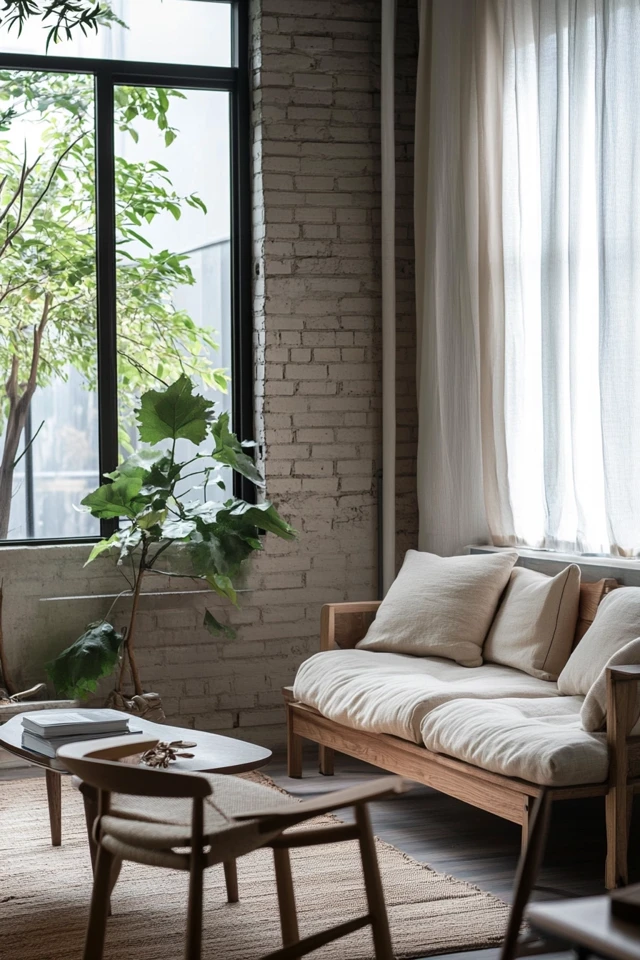
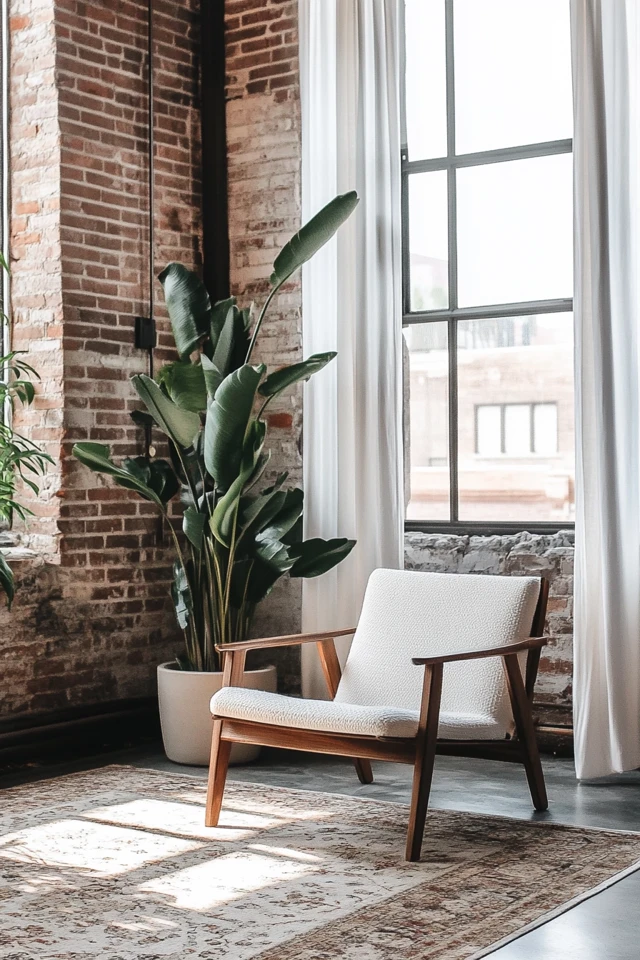

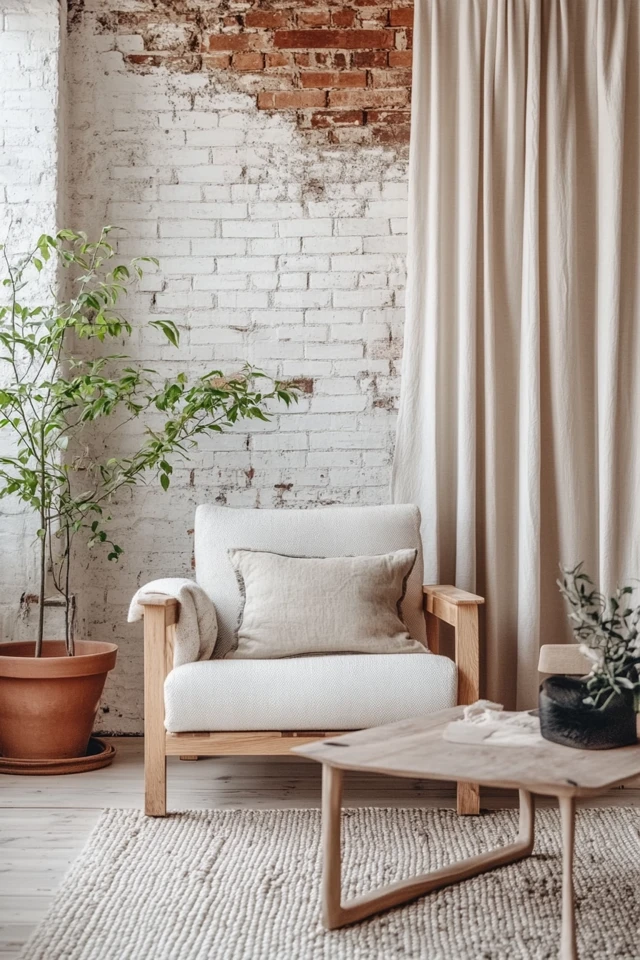
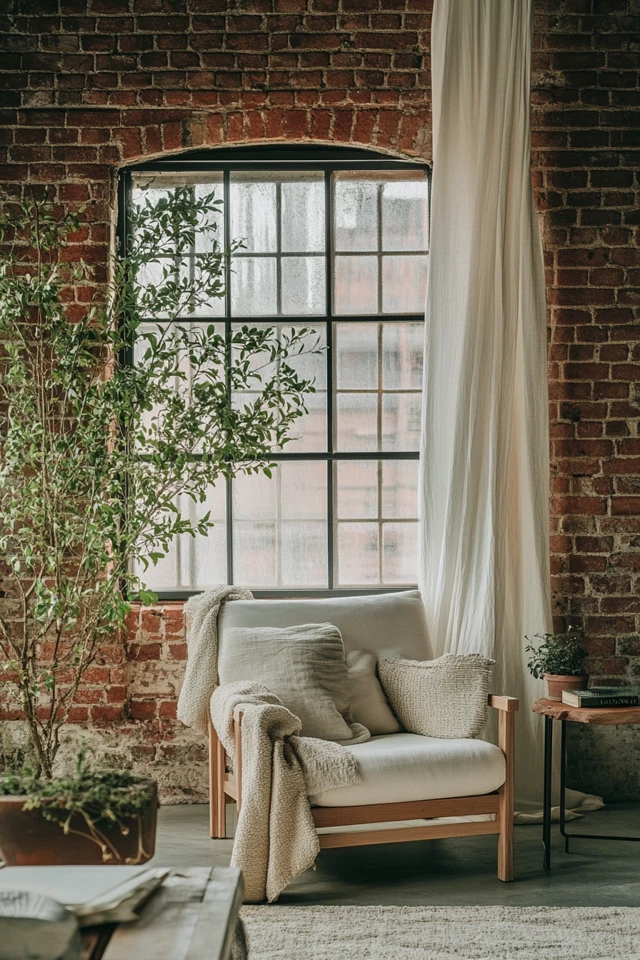
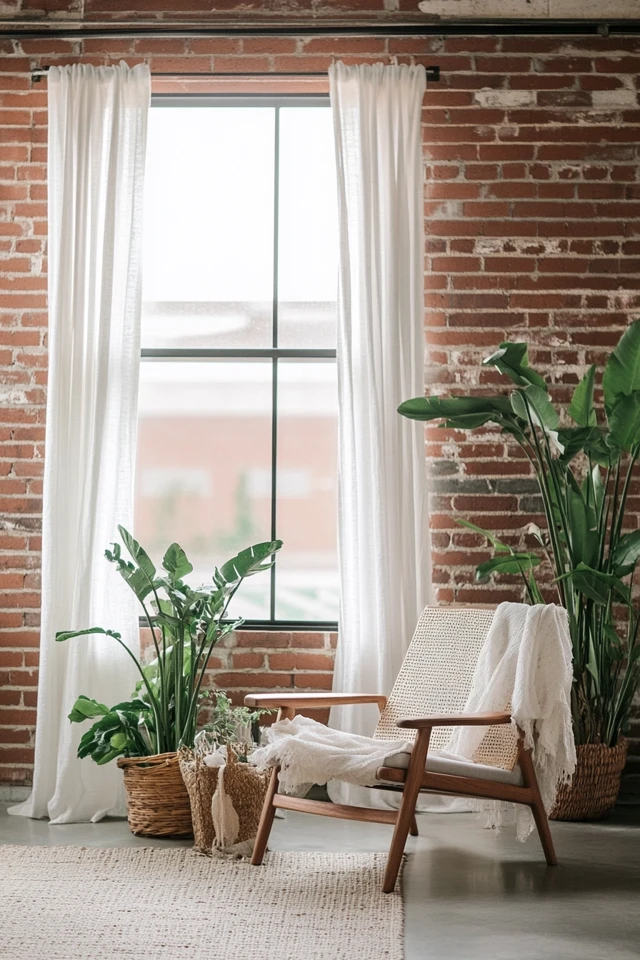


Styling Tips for Industrial-Scandinavian Fusion
1. Combine Light and Dark Elements
- Pair a white sofa with a black metal coffee table.
- Use light wood dining chairs with a concrete or metal table.
2. Add Warmth with Soft Lighting
- Use candles or string lights for a cozy, Scandinavian vibe.
- Pair these with bold industrial fixtures to balance the look.
3. Create Contrast in Every Corner
- A soft linen armchair next to a metal shelving unit creates instant contrast.
- A warm wood desk paired with a black steel chair adds balance.
Conclusion
Mixing industrial and Scandinavian styles is all about finding harmony between rugged and refined, bold and cozy. By focusing on neutral palettes, contrasting materials, and functional design, you can create a space that’s modern, inviting, and full of personality. Whether you’re designing a small apartment or a large home, this fusion offers endless possibilities for a stylish, balanced interior.
Ready to transform your space? Embrace the best of both worlds with these practical tips and let your industrial-Scandinavian design come to life!
FAQs
1. Can I mix industrial and Scandinavian styles in small spaces?
Yes! Use light colors and minimalist furniture to keep the space open and airy. Focus on small industrial accents like metal shelving or pendant lights.
2. What colors work best for this style?
Neutral tones like white, beige, gray, and black are ideal. Add subtle pops of color with greenery or soft pastel accents.
3. How do I add warmth to an industrial space?
Layer soft textiles like rugs, throws, and pillows, and incorporate natural wood elements to balance the raw materials.
4. Are there any specific furniture brands for this style?
Look for Scandinavian brands like IKEA or Muuto for minimalist furniture, and industrial pieces from Wayfair, CB2, or local thrift shops.
5. How do I prevent the space from looking too cold?
Balance industrial elements with soft lighting, cozy textiles, and warm wood accents to maintain a comfortable, inviting feel.

